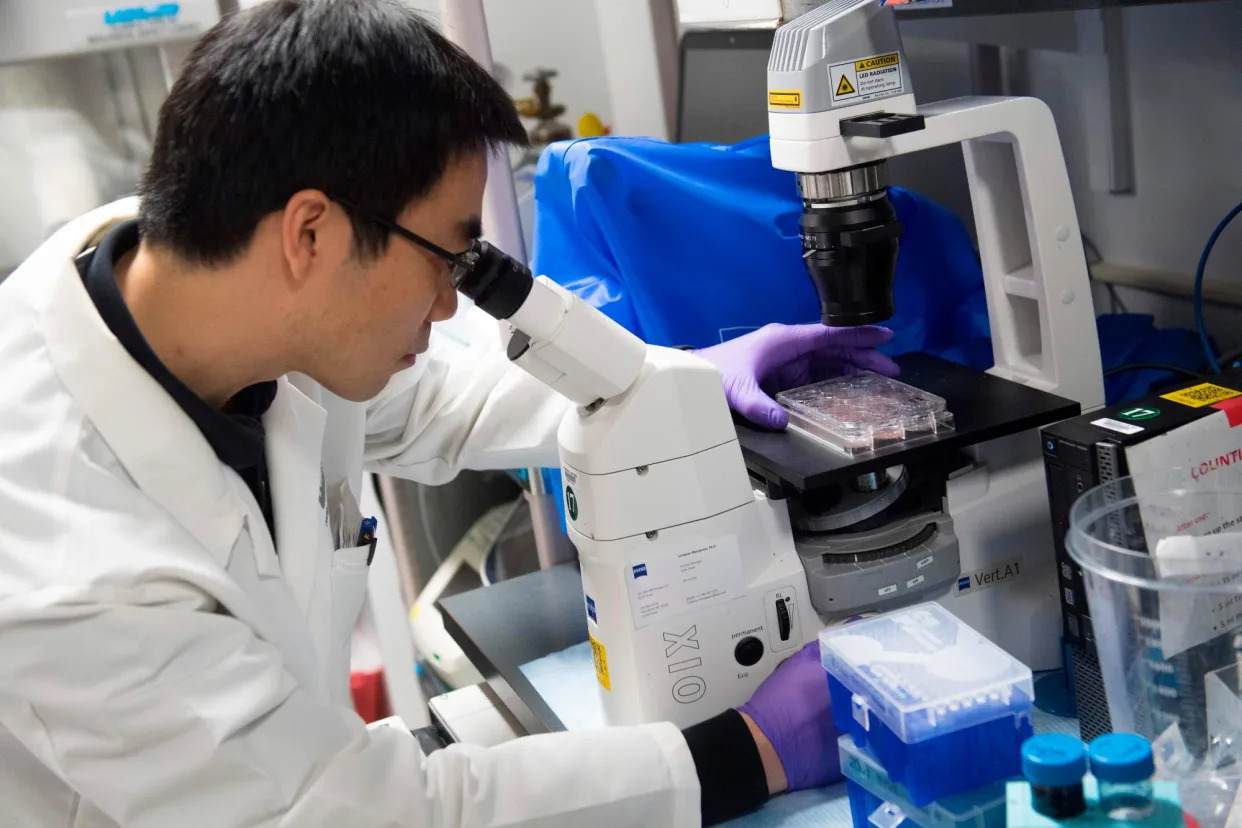
The Trump administration released “America’s AI Action Plan” last month with the goal of expanding US dominance when it comes to AI in order to maintain a global edge, especially over China.
But Donald Trump’s cuts to scientific research funding through federal agencies – including the National Intitute Health, the National Science Foundation, the Defense Advanced Research Projects Agency and Nasa – will undermine that goal and threaten the research environment that fostered the foundations of AI, experts in the field said.
Mark Histed, chief of neural computation and behavior at NIH, said that while the effects of funding cuts on AI might not be obvious in the next year or two, they threaten “the whole ecosystem that we have built around AI, that has been created by federal support”.
“What I see is an ecosystem, right? I see multiple different disciplines contributing different aspects to this process. I see academia playing a key role and industry playing a key role. And so as we look forward and we think about trying to advance AI, we need to be supporting that entire ecosystem,” Rebecca Willett, a computer science professor at the University of Chicago and faculty director of AI at the Data Science Institute, explained, echoing Histed.
Histed and Willett both believe that AI simply would not exist in its current form without federally funded research, and offered a variety of AI technologies and companies that owe their development to federal funding.
For example, self-driving cars rely on computer vision technology – federal funding has supported its development since the 1980s. Computer vision is the foundation for the vast majority of face and image recognition technologies. AlphaFold, which uses AI to help discover new medications, and Anthropic, which improves AI safety, including for the US Department of Defense, also exists thanks to federal support.
Related: Trump signs executive orders targeting ‘woke’ AI models and regulation
AI research often takes cues from other realms of science, which in turn can help foster AI, so cuts to other disciplines will affect the intelligence’s development. Histed points to the overlap between his field of neuroscience and AI.
“We’re just at the beginning of understanding how networks of connected neurons create functions like memory and cognition. And if you look at a machine learning network or an AI network, that is also the case,” he said.
Histed pointed out that federally funded research that brings these disciplines together has led to Nobel prize-winning work. Geoffrey Hinton and John Hopfield won the 2024 Nobel prize in physics for their work at the intersection of neuroscience and AI, and received support from the NSF.
Trump’s plan could also pose a threat to AI safety, which is essential to ensuring that AI is not only effective but that it operates within the boundaries of the law. The plan includes provisions to revise guidelines at the National Institute of Standards and Technology “to eliminate references to misinformation, Diversity, Equity, and Inclusion, and climate change”. These are three of the most controversial aspects of AI, which has been demonstrated to show gender and racial bias in a variety of applications, including face recognition technology and popular applications like ChatGPT.
A recent study found that ChatGPT advises women to ask for less money than men when prompted for advice about salary expectations. Histed says that the field of AI safety is also closely linked with neuroscience, because understanding how human neural networks create bias can also help us understand how AI networks create bias.
Trump’s plan also calls for less red tape when it comes to building AI datacentres that can suck up huge amounts of energy. Willett said it was true that large-scale machine learning systems “come at an enormous cost. It’s a huge amount of energy, a huge amount of cooling.”
But, she added, AI companies themselves should still want to reduce those costs regardless of what Trump’s plan says.
“Not only do they have environmental impacts, but it’s expensive for the companies that are running these systems. And so I think across the AI community, people are invested in trying to make these systems more efficient,” Willett said.
Willett and Histed both say that the AI community will be under threat in the coming years if the federal government no longer funds their training at universities. Histed noted that the federally funded “talent pipeline” is “incredibly important”, adding “we train lots and lots and lots of people in neuroscience and related fields that are going directly to these tech companies. There’s tons of overlap. All the people who are leading the technical side of the AI revolution have had contact with the academic world that trained them and is supported by US federal funding.
“One of the big ways in which tech companies benefit from universities is that we train students, right?” Willett said. “And so they walk into these companies with cutting-edge skills that these companies need. And so right off the bat, I think universities are playing an essential role that’s important to industry.”






Comments